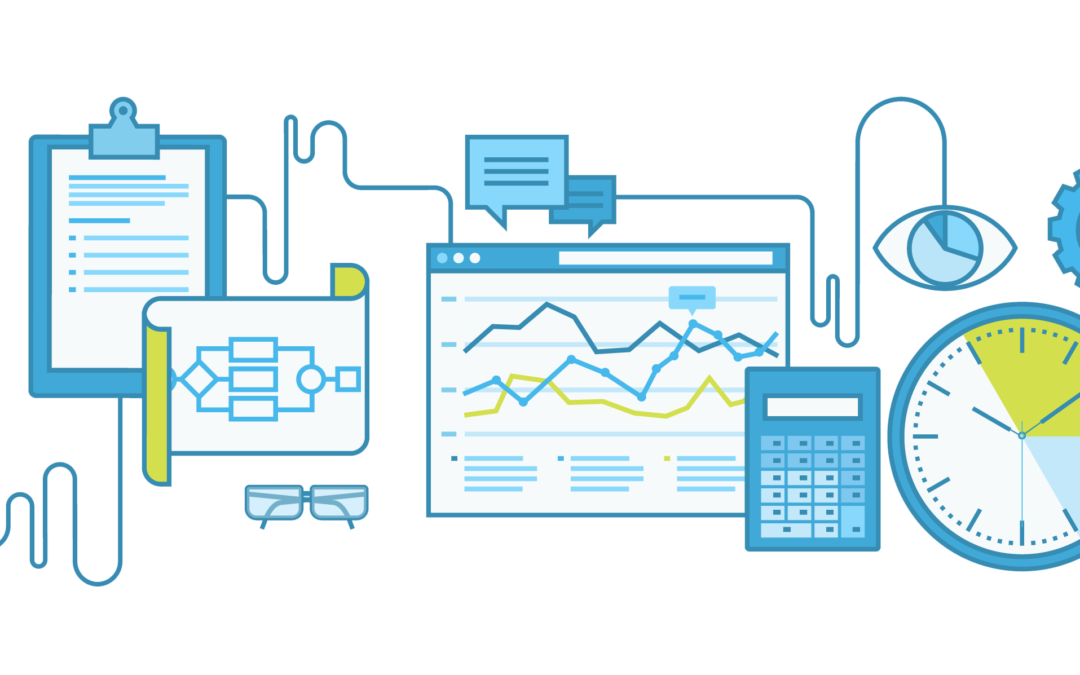
Why Data Literacy Is Your First Step to Business Intelligence
In college, I had a short-lived and hilarious dream that I could learn to play lacrosse. I suppose I was attracted to the glamour of running wind sprints for two hours while being hit with titanium poles.
Alas, the dream was not to be. When I showed up to my first pick-up game, I had no idea what a “slide” was, didn’t realize “clamping” had anything to do with face-offs and had no idea where “the box” was.
I lacked lacrosse literacy.
The problem’s the same with business intelligence software. Except, data literacy is the key factor.
If you want your employees to use the $3,000-per-license business intelligence software you bought, they need to be data literate first. Otherwise, that BI tool will be as useless as a lacrosse stick was in my hands.

Fortunately, Gartner research can help you and your team get data literate. They’ve come up with multiple strategic suggestions that you can implement at your business.
What Is Data Literacy?
Data literacy means you “speak” data the way you might speak any other foreign language.
“Gartner defines data literacy as the ability to read, write, and communicate data in context, including an understanding of data sources and constructs, analytical methods and techniques applied, and the ability to describe the use case application and resulting value.”
(Full research available to Gartner clients.)
In plain English, data literacy means you know what data you’re tracking, why you’re tracking it, how to read that data, and how to use that data to save or make money.
Data Literacy Is the Gateway to Business Intelligence
At its heart, business intelligence software is a data-wrangling program.
BI software programs organize all your data sources (website data, CRM data, email data, financial and POS data) and let you see how those data sources interact (for example, did sales increase when you changed the colors on your website?).
So, until your employees are literate with the data your business intelligence tool wrangles, they won’t know how to wrangle their business intelligence tool.
The data literate person knows what data they’re tracking, where it’s stored, and how it fits together. That’s not all they know, though.
Data literacy is also a way of thinking in terms of data. The data literate person doesn’t just think in generic terms—such as did sales increase? They think in terms of data—did Q1 website conversions among women ages 18 to 34 increase as a result of that email campaign?
It’s like learning a foreign language: You haven’t really learned that new language until you start thinking in it, as well as speaking it.
How To Teach Your Employees Data Literacy
Most employees, however, probably don’t think in terms of data, which presents you with another challenge: How do you get your employees to start thinking in terms of data?
1. Employees need to know what data literacy is
Becoming literate in any new lingo is challenging … especially when people don’t know that lingo even exists.
Chances are, most of your employees aren’t even aware that data literacy is a concept. So if you want your employees to use your BI software, you’ll have to introduce data literacy first and explain why it matters.
And don’t just introduce the concept of data literacy once. Introduce it repeatedly.
No, “introduce repeatedly” is not an oxymoron. Since learning how to speak (and think) data is a major change, a single introduction probably won’t stick. They may forget at first, and that’s natural.
Case in point: As a one-time substitute teacher, I got several classes to make a major change by introducing that change gradually.
The English teacher I subbed for allowed cell phone use in her classes. Predictably, the students were learning next to nothing, though their Candy Crush scores were amazing, and they Snapchatted all their paper cuts. About a month into the gig, I decided to ban cell phones.
The change only worked because I introduced it gradually—I announced I would start the policy on a set date, explained why I was doing it, and reminded students to leave phones in their lockers.
If students brought their phones with them, they could put it in a plastic box at the front of the room when class started. If their phone rang while in the box, I’d leave it alone. If it rang while on them, I’d answer it in a loud and public fashion, and they’d go to the principal’s office.
Though the notion of spending even 45 minutes without their phones was horrifying for most of them, the policy worked well because I gradually introduced the concept of class without phones.
How to put this into practice:
There are multiple ways to introduce data literacy to your employees over a period of time.
At Capterra, our employees volunteer to lead “lunch and learn” sessions: brief, hourlong intros to topics that interest them. You could encourage data-savvy employees at your company to do the same.
You could also spend time at all-company or department meetings translating basic activities, or concepts, into data. Anything that breaks the data-ice is a good idea.
2. Employees need to speak data
Once employees know what data literacy is, they need to learn to “speak” data.
Gartner analyst Valerie Logan suggests you approach learning to speak data the same way you would any foreign language and even refers to the process as ISL or information as a second language. (Full Gartner research is available to clients.)
How to put this into practice:
Figure out which employees already speak data, and also who can translate data into plain English. These “data translators” can help employees who struggle to speak data.
Figure out what the language barriers are to speaking data: If business and IT folks don’t speak the same language, that’s a language barrier (or “interpretation gap,” as it’s also called).
There are multiple ways to break language barriers:
- Keep a glossary of common terms.
- Make sure C-level executives speak data so they can set an example.
- Make sure your business goals are expressed in actionable language.
3. Employees need to speak data to each other
Practice makes perfect, so speak data regularly until it becomes a habit.
As Gartner analysts Alan Duncan and Lydia Clougherty Jones suggest, the best data-driven companies focus consciously on this goal. They don’t just speak data, they interact in terms of data. They use data as a way to build inter-team trust, presenting evidence and keeping an eye open for problems such as confirmation bias. (Full Gartner research is available to clients.)
At the same time, you’re learning terms such as “confirmation bias” and “cognitive filtering,” you can think about examples of this in your own work, and be on guard against these bad habits.
How to put this into practice:
Follow the example of foreign language conversation clubs. In the same way those clubs meet once a week to practice German or Amharic, get a group together for weekly or monthly coffee meet-ups where you talk data: what data you’re working with, how it interacts with other departments’ data, and what data you wish you had.
For instance, how does your website’s load time impact visitors and conversions? If sales and tech aren’t discussing how those data sets interact, you could be missing out on a possibly lucrative correlation. (Hint: shorter load time almost always means more visitors and conversions).
Discussion groups like this also help with another important goal: becoming data-driven. This is where business intelligence as a way of thinking comes into play. As you’re learning to speak data, treat it as an opportunity to learn how to think differently.
4. Employees need to speak data frequently
Ideally, brown bags and discussion groups will be your first step on the way to data literacy immersion.
Immersion’s the best way to learn to speak a foreign language, and speaking data is no different.
How to put this into practice:
Gartner analyst Valerie Logan recommends you speak data in everyday conversations, “from board meetings to team meetings.” If speaking data becomes a regular behavior, it’s more likely to stick. And when it sticks, you’ll be on your way to being data-driven.
As Gartner analyst Alan Duncan notes, becoming data-driven has more to do with behavior than technical know-how. That’s why HR should also be involved in your attempts to become data literate.
Duncan recommends having the HR department be a core stakeholder in business intelligence change management. Primarily, they can “adjust hiring practices to emphasize analytic literacy.” (Full Gartner research available to clients.)
